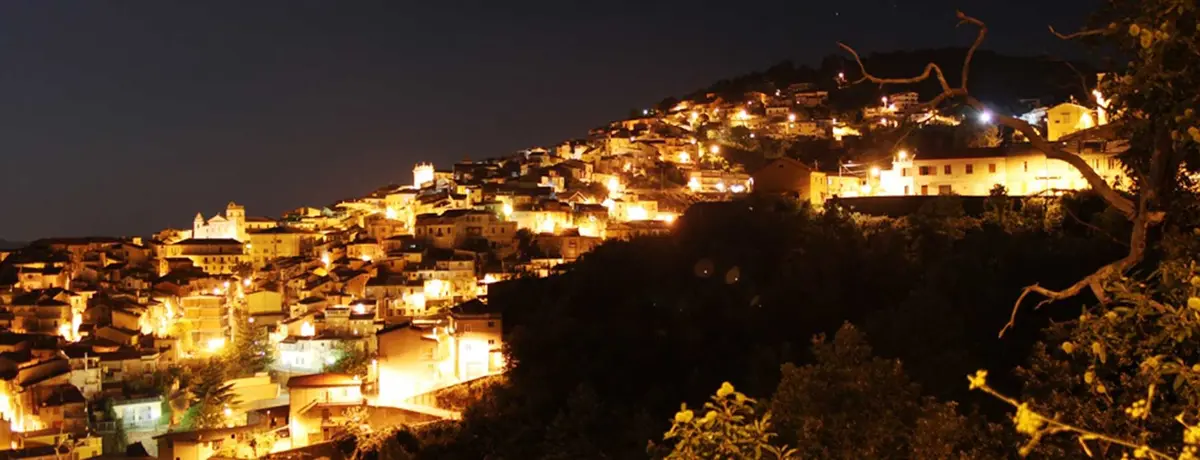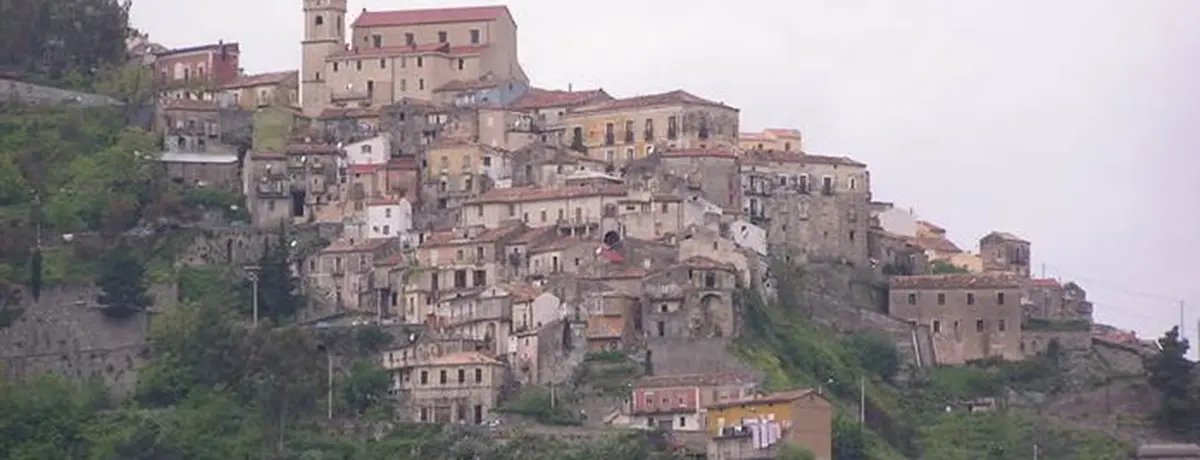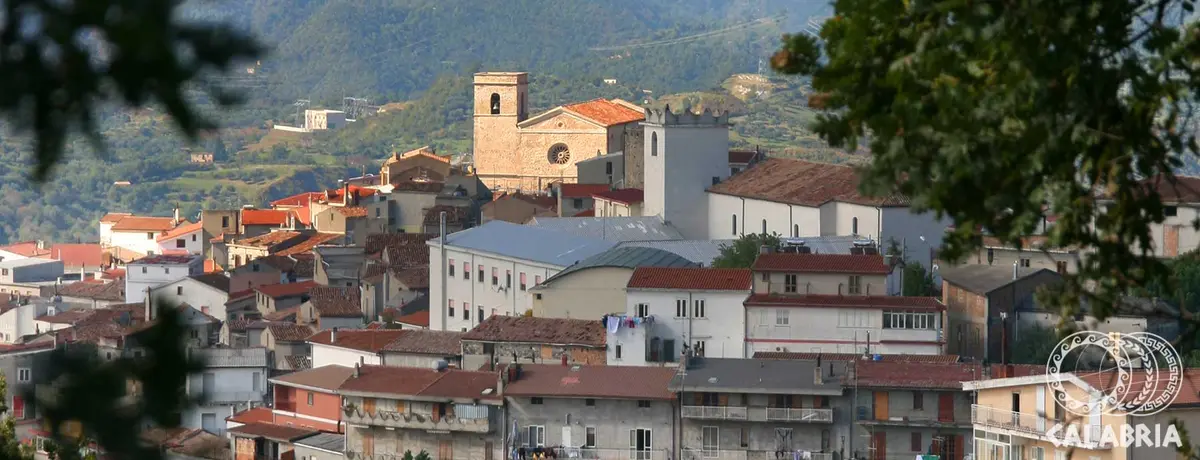Sersale
Sersale, nature at the foot of the Sila Piccola

Mountain
Sersale and its surroundings are rich in history and beautiful natural landscapes including the Valli Cupe canyon, unique in Italy due to its geomorphological features. It has become an example of sustainable tourism experienced and launched "in the field", and as such, it has received much attention and admiration.
The high vertical walls of the Valli Cupe area are often inaccessible and uneven, with a myriad of small crevices carved by atmospheric agents,
The area of Sersale boasts a hundred spectacular waterfalls, immersed in a frame of lush subtropical greenery.
where birds live their undisturbed life and build their nests. Several majestic monoliths are deeply nestled into the wild Calabrian forests and form a secluded and unknown world. About a hundred breathtaking waterfalls, some higher than 100 metres, surrounded by sub-tropical lush vegetation, are fed by impetuous streams flowing along the mountain slopes down to the Ionian Sea.
Sersale’s old town centre
Narrow and winding alleyways climb up the slopes of the Angaro hill, opening up into squares and courts on which the façades of antique elegant buildings cast alluring shadows. The old town centre is located in the town's upper part and between narrow streets, underpasses (the typical “fhagu”), unexpected squares, cobble-stone streets, next to a sober but essential architecture interrupted by elegant buildings featuring beautiful stone portals. There are very few roads that allow vehicles to transit inside and the maze of alleys that surround the buildings are immersed in a fascinating silence, which transports visitors to a surreal dimension; an exciting but silent realm filled with unique visual sensations. The main church or Chiesa Madre, which boasts a neoclassical façade and portal surmounted by statues, can be found in the town centre. Inside visitors can admire the altar in stucco and plaster-work on which the statue of the Madonna del Carmelo (the town's patron) is placed, as well as another small statue in marble and of fine workmanship, dating back to the 1600s and located at the church’s entrance. Adjacent to the Chiesa Madre is the Chiesa dell’Immacolata (church of the Immaculate) where it is possible to admire the wooden altar in polychrome and the statue of the Immaculate; works by an unknown sculptor of the XVII century. In the high part of the town, between picturesque stairways and steep climbs, we find the Chiesa di Sant’Anna (Church of St Anne). In front of the town, on Monte Crozze, a chapel was built in 1935 as a sign of devotion to the Madonna del Carmelo due to a violent earthquake and a disastrous flood which beat upon Sersale in March of the same year. The Monte Crozze, besides being a sacred place is a great viewpoint that offers views from Punto Stilo to Crotone.
In the heart of the Sila Piccola
Sersale is located on the edge of the natural site geographically identifed with Sila Piccola. The environment of the Sila Piccola is very rich and is home to a variety of vegetation that characterises landscapes, from those typical of the Mediterranean scrubland to the thick wood of conifers which reminds visitor of the surprising “Nordic” landscapes, which are far from how Calabria is usually perceived. The reason for this richness and variety lies in the strong difference in height of the area that determines a diversification of vegetation. This ranges from the environment of the Mediterranean scrubland to woods of broadleaf tree species, constituted by chestnut trees mixed with turkey oaks, ash, aspen, hornbeam, Neapolitan alder. In the highest points, the landscape is characterised by the exclusive presence of larches, a conifer that is so linked to the plateau's environment to be called "pino silano” (Sila pine). From the point of view of fauna, this area is home to foxes, badgers, dormice, wild cats, wild boar, hares. The typical environment of the Sila, can be seen beyond altitudes of 1400 metres with prevalence of pure beech or subsidiary to pine, alder wood and white fir trees. The mixture of beech and white fir trees, typical of Monte Gariglione, remains a strong scientific attraction of the Sila Piccola. A Mediterranean climate, with snow and cold winters and quite cool summers, makes the Sila Piccola an ideal destination for all seasons. In spring, we remain under the spell of the understones of thousands of blooming flowers on forest clearings, while summer turns the Sila into a paradise for curious hikers and families of day-trippers; autumn is the season of rusty colours and the twilight of beech tree leaves that spread a thick carpet that glimmers with the sun at sunset; in winter the abundant snowfalls allow skiing lovers to reach one of the ski lifts in the area or to travel with snowshoes and cross country skis to one of the many natural slopes of the plateau in search of prints and enchanting landscapes.
Valli Cupe Canyon
The area of Sersale was included in the perimeter of Valli Cupe and Monte Raga. The Valli Cupe reserve offers hikers wonderful landscapes both climbing the Fegato river as descending from Monte Raga which, despite its luxuriant vegetation, allows to see from the top its towering walls of reddish colour. These unique crevasses, dug out in walls made up of sandy material, are of natural origin. As they ascend the river, the walls conceal the entrance to a wonderful canyon; geological sandstone features which are among Italy’s most fascinating and impressive. The canyon, with its steep walls that tend to meet as they rise up, obscuring the sky, create an ideal habitat for protected and rare species of animals and plants. The Valli Cupe trail already existed in 800 A.D. and connected four Basilian monasteries.
Waterfalls
Along the course of the Campanaro river, one of the most varied and spectacular of the Presila Catanzarese and located in the area of Sersale, in just two kilometres, visitors will discover eleven waterfalls, whose height ranges between fifteen and forty metres. The best-known waterfalls are those of Campanaro, from which it is possible to admire a stone and terracotta bridge of the last century; a true work of civil engineering in addition to the three waterfalls of the Cliff. Among these, a large one plunges into a wonderful equatorial-type forest; next best are the “cascate dei Muschi e degli Allori” surrounded by woods and enriched by fragrant essences and by the presence of herons and many other species of rare birds; lastly, we recommend “cascata dell’Inferno” (Hell’s Waterfall) that gets its name due to its peculiar configuration, embedded in a canyon that forms a ditch full of water that is very deep and that according to popular belief would lead all the way to hell.
Crocchio Waterfall
To reach the “gole del Crocchio” we must walk along a path whose journey includes an old ruin built in stone, called pastillaro (where once upon a time the processing of chestnuts took place), until reaching the “balconata Arocha”; a wooden platform with a maximum capacity for 15 people from which to admire the course of the water, surrpunded by unspoilt nature. A little further on we reach the Cascata del Crocchio (Crocchio Waterfall), of spectacular beauty, with its transparent waters whose surface creates reflections of shimmering colours. Here, a small basin of water is formed, which is deep in some points where it is possible to cool off and go for a swim defying the currents until underneath the waterfall.
Gastronomy
The main point of reference or local gastronomy is the valuable mushroom, which is plentiful and and can be found in numerous varieties. Any local restaurant or trattoria will offer delightful dishes featuring the Sila’s porcini mushroom; the most important and sought-after variety, which makes up one of the many dishes of the Sila’s cuisine which are based on this ingredient. In addition to the delicious aromatic porcini mushroom, in this area it is possible to let our curiosity run wild and try other less well-known mushrooms but equally as interesting in gastronomic terms. Last but not least, a gastronomic route of typical foods cannot ignore the many local dairy products of excellence, such as: provole, ricotta, scamorza, butirri and pecorino or mixed cheese.
Useful information
What to know about Sersale
Where to Sleep
There are 1 available accommodations.
Places
There are 1 places to visit.
Travel Ideas
There are 3 travel ideas.
Infopoint Sersale
Via Roma, 14, Sersale
No result









